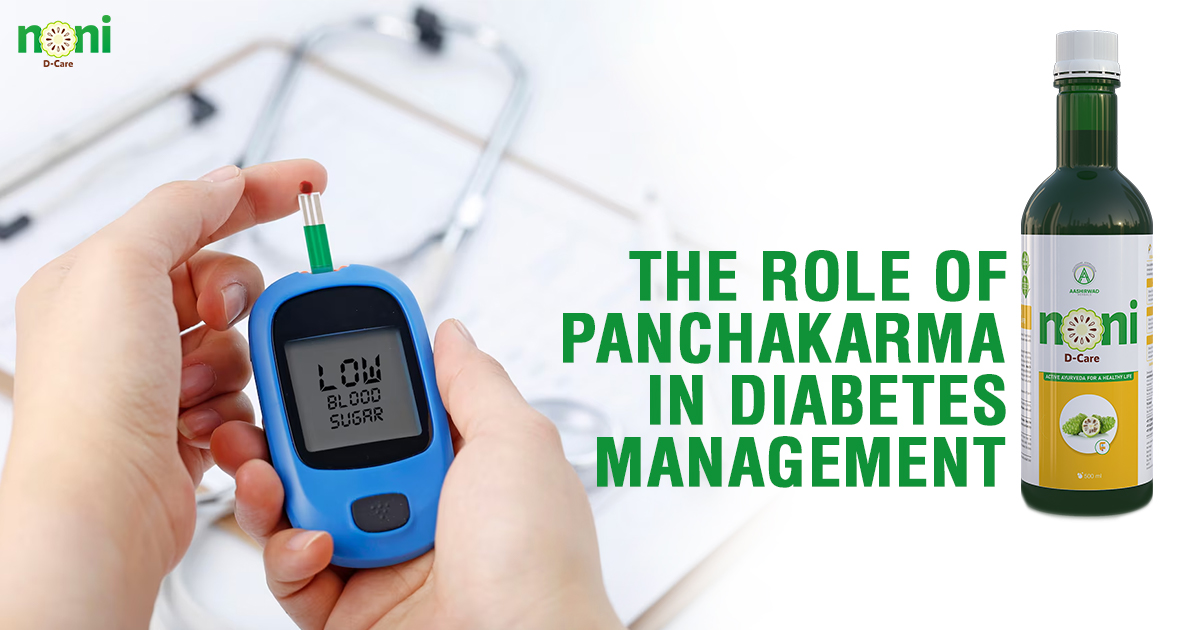The Role of Panchakarma in Diabetes Management

Panchakarma is made up of two words “pancha” (five) and “karma (actions).” These are the five actions or five therapies to detox and rejuvenate your body. It helps purify the body of toxins, even out vata, pitta, and kapha doshas and restores general health. Panchakarma is a revamping process for the body.
The five procedures of panchakarma that have been written in Charak and Shushruta Samhita are Vamana, Virechana, Basti, Nasya, and Raktamokshana. Preparation before the procedures, which includes following a particular diet, lifestyle changes, snehana, and swedana, is significant in preparing the body for panchakarma. Aftercare is also as important as the preparation.
Charaka Samhita and Diabetes
Diabetes or Madhumeha is defined as one of the twenty types of Prameha. Genetics, lifestyle factors, intake of excessive sugary and heavy foods, less physical activity, and stress are considered the causes of Madhumeha. The symptoms include excessive thirst, frequent urination, and weight loss.
The vitiation of kapha and vata along with an accumulation of toxins (ama) is largely associated with Madhumeha.
The role of panchakarma in diabetes management
According to Acharya Charaka, therapies should be done as per the individual's constitution, imbalances of dosha, and present health conditions. This will ensure the effectiveness and safety of the treatment.
Madhumeha or diabetes, especially diagnosed with type 2 diabetes, is stated to be effectively managed with panchakarma as per a case study published in November 2019 in the World Journal of Pharmaceutical Research. By detoxifying, balancing dosha, and improving metabolic health, Panchakarma helps in managing diabetes.
Here's how each step of panchakarma may help:
Vamana: This emesis therapy aids in removing excess kapha dosha, improving digestion and metabolism. Kapha dosha is mostly associated with insulin resistance and weight gain.
Virechana: Purgation therapy expels excess pitta dosha and ama from the gastrointestinal system. This helps in the regulation of blood sugar levels and improving liver function which is essential for glucose metabolism.
Basti: Specific basti or enema with the use of honey and oils helps manage diabetes. It improves insulin sensitivity and digestion. It also balances vata dosha, which assists in hormonal balance and regulates the nervous system.
Nasya: Nasal therapy helps in managing stress, a key factor in diabetes management.
Raktamokshana: The bloodletting therapy reduces toxins and purifies blood, improving blood circulation to the organs. It helps reduce oxidative stress and inflammation which is often linked to complications of diabetes.
The rejuvenation therapy or Rasayana, especially Naimittika Rasayana is used in Prameha, which rejuvenates, boosts immunity, and enhances energy. It helps better management of diabetes and its risk factors.
Panchakarma therapy: What to Expect?
For a diabetes patient, panchakarma can be a makeover therapy. This requires a specified consultation with an Ayurvedic practitioner for proper evaluation of individual dosha. Based on that, a unique panchakarma procedure is designed. Dietary and lifestyle guidelines are given that complement the treatment.
Final Thoughts
Panchakarma is a detoxification and rejuvenation therapy, which can be designed as per individual medical conditions. It not only rejuvenation but also strengthens the body, which is essential for chronic illness, metabolic disorders, and where the body requires deep cleansing. It is equally beneficial for those with a higher risk of developing diabetes.
While panchakarma may not replace conventional therapy, it can be a complementary treatment for those living with diabetes to improve the effectiveness of diabetes management.
If you are interested in a combination therapy that is based on ancient wisdom, Panchakarma is for you.
